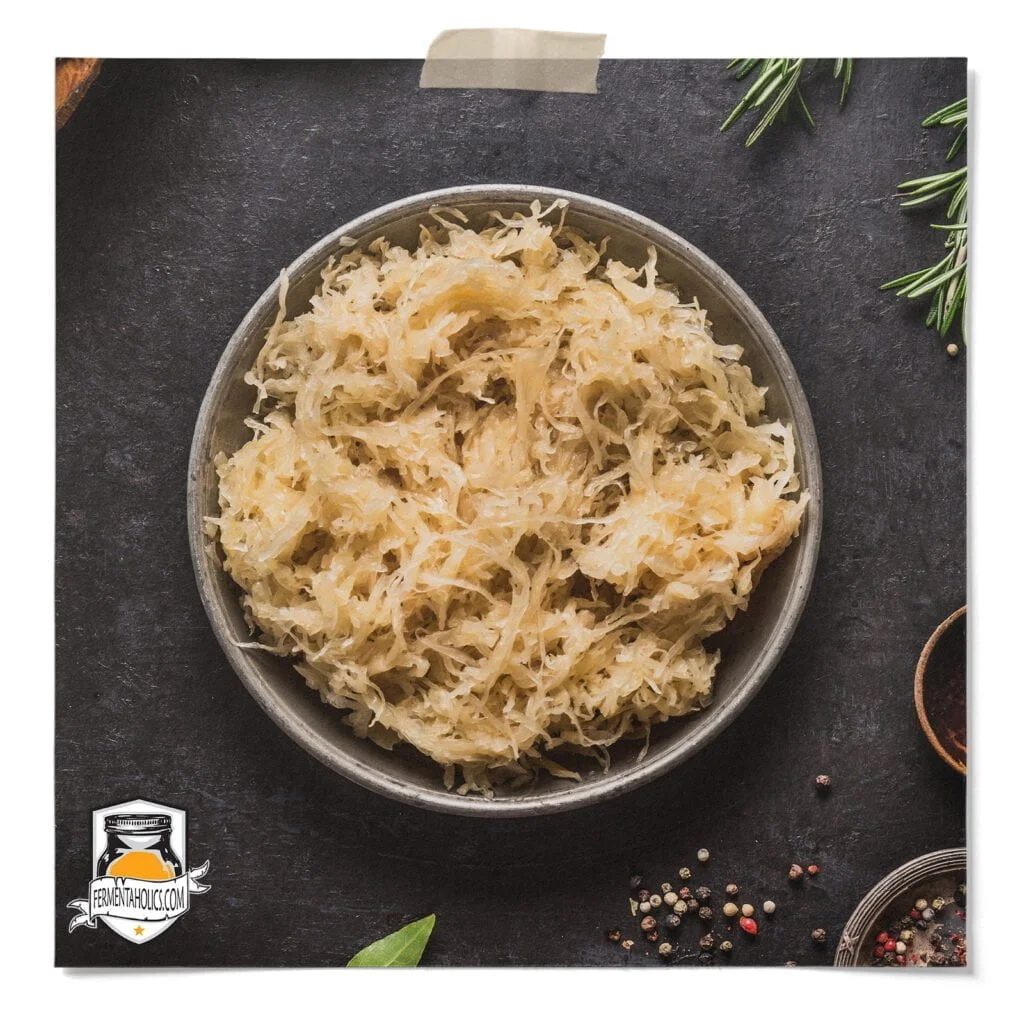
It’s amazing to watch simple, pure ingredients transform via fermentation. Crisp, sweet cabbage withers down, becoming delightfully tangy sauerkraut. Vegetables succumb to the power of salt and become softer as their cell walls break down. In its very essence, sauerkraut is pickled cabbage. The term pickle has been culturally assigned to vinegar-brined vegetables but actually refers to any vegetable preserved in brine, whether vinegar or salt. The benefit of using salt brine is that the vegetables ferment and create rich, unique flavors and adding healthy probiotics, vitamins, and enzymes to your diet.
For the most basic sauerkraut recipe, all you need is cabbage, a salty brine, and time. That’s it! Once you have the basic steps and recipe down, you can get creative by adding different spices, fruits, and vegetables to really make it your own. Start simple and familiarize yourself with the flavor profile that naturally occurs, because most of the time, keeping it simple is best. My all-time favorite way to make kraut is to add caraway seeds simply. I always have a jar of this handy in my fridge. Nonetheless, I still like to experiment with different layers of spiciness, sweetness, and all types of vegetables that lend their own textures.
Vegetables that grow close to the soil, like cabbage, foster more beneficial microbes on their surface and are great for fermenting. All you need to do is provide the right environment.

Fermentation is the process by which bacteria and yeast consume sugars, digest them, and transform them into byproducts such as alcohol, organic acids, and gases. Although there are many different forms of fermentation, the one taking place in this recipe is lacto-fermentation. Lacto-fermentation is performed by a group of bacteria called lactic acid bacteria (LAB). This produces lactic acid, which is most famous for cheesemaking due to its ability to process lactose, aka milk sugar.
While making fermented foods like kimchi and sauerkraut, this process works because the vegetables are submerged in salt water. LAB is already present on all plant matter, especially those that grow close to the ground, which makes the fermentation process easy for all vegetables. This process also creates enzymes and vitamins that make nutrients more bio-available in your body. Lacto-fermentation has been around as long as humans have been preserving food and is the reason we have classics in global cuisines like sauerkraut, kimchi, sourdough, and so much more! Be sure to check out our other fermented food recipes, like our traditional kimchi recipe.
1
Quart20
minutes7 - 14
DaysThis easy fermented sauerkraut recipe is for a one-quart jar. To scale this recipe up, multiply the ingredients or toggle the serving size up above.
1 TBSP Pink Himalayan Salt, Non-Iodized Salt Kosher, Sea Salt, Cheese Salt
1 Medium Sized Cabbage About 2lbs
1-2 TBSP Caraway Seeds (optional)
Large bowl or pot
Sharp knife or mandolin
Remove the outer leaves from the cabbage. Set aside for use later.
Cut the cabbage in quarters and then into thin, 1/8″ slices.
Add shredded cabbage to the bowl, salting as you go to ensure full coverage.
Allow salted cabbage to sit in the bowl for 10 minutes.
Use cabbage tamper to bruise the cabbage and help release its juices. Use pretty decent force, for about a minute. Let the cabbage rest for around five minutes, then repeat. *See notes
Once you feel that the cabbage has released a sufficient amount of brine, you can begin packing it into the jar. Pack the jar tightly, using the tamper to help release any air bubbles.
Take one or two of the cabbage leaves you set aside earlier and place it in the jar, pressing down over the shredded cabbage, and below the brine.
Add a fermentation weight on top and push down until fully submerged. If you don’t have enough brine, add a pinch of salt and a tablespoon or two of filtered water.
Place lid on the jar and set aside to ferment. Let it go at least one week before tasting it. Two weeks is better. The flavor will continue to develop over time, so experiment and see how sour you like your kraut!
When you decide it’s done, store in the fridge. It stays fresh for months.
